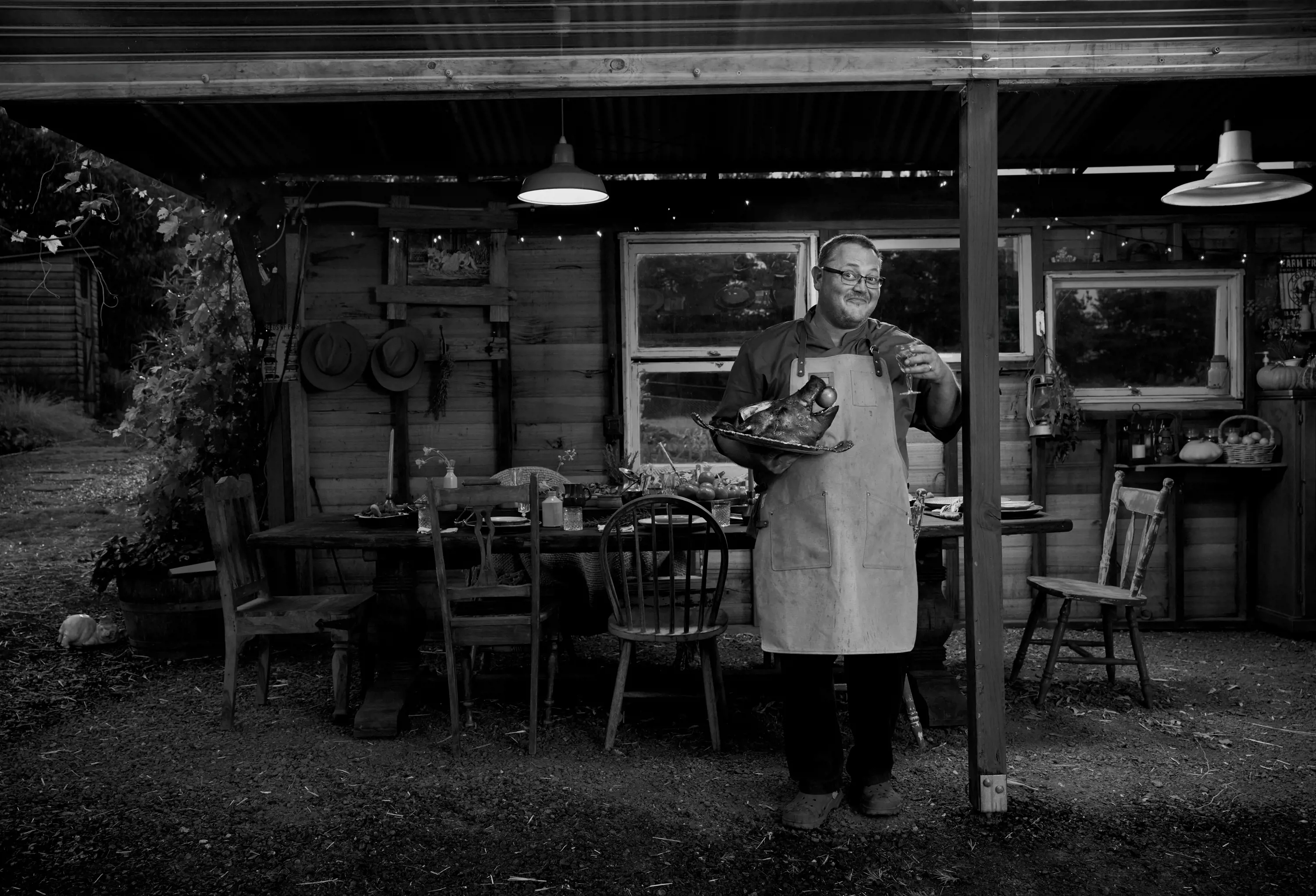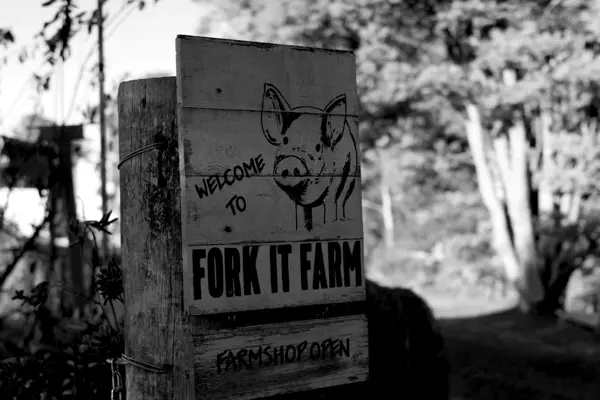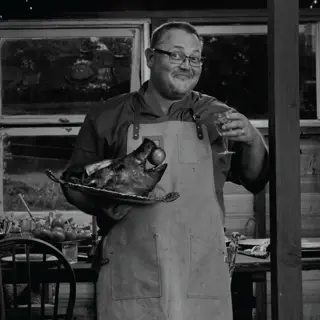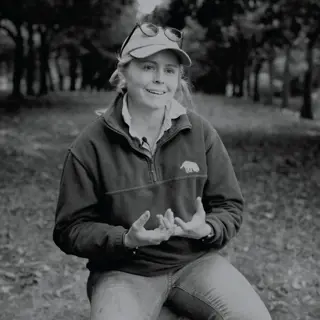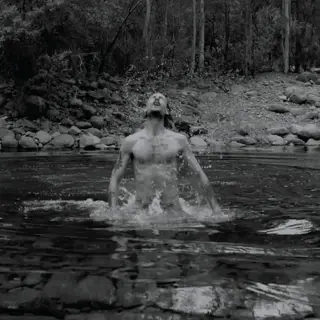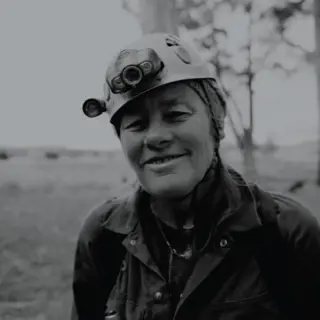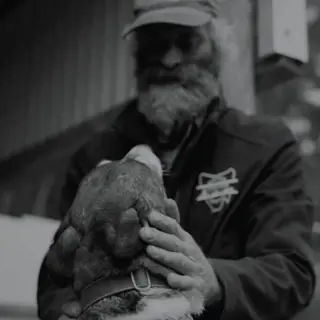Go the whole hog (or in this case, the whole pig’s head) at a sumptuous farm feast, where nothing is off limits.
Ever felt the urge to reject the rat race and go off the radar? That’s exactly what Kim and Daniel Croker did in 2017.
“We said ‘fork it’ to our old lives and quit our jobs, sold our house in Brisbane and moved to beautiful Tasmania to become pig farmers,” says Kim Croker, co-owner of Fork it Farm.
The pair has found purpose in embracing sustainable slow-farming practices, raising rare-breed Berkshire pigs on rolling pastures in Lebrina, a peaceful township about a 30min drive north of Launceston.
Fork it Farm is at its salty, smoky best during Tasmania’s Off Season (May–August), when guests are invited to partake in an unusual winter menu of pig’s jowl, ear, tongue and other often underutilised cuts.
"The Pig’s Head Feast is a great opportunity for us to get to know not only our customers, but to share with them why we do what we do, how it’s all done and how great it tastes".
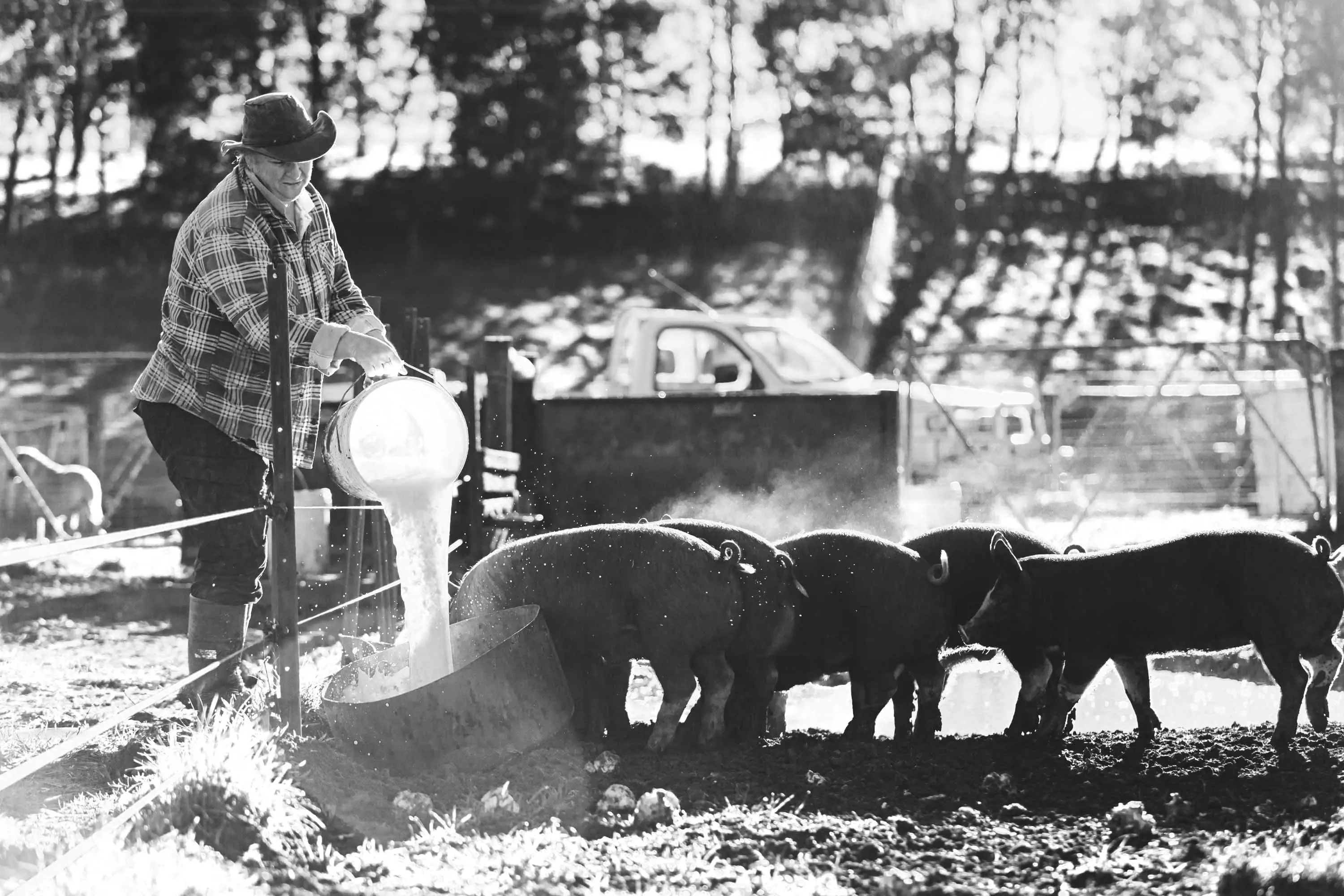
Minimum waste, maximum taste
With a low-intervention ethos, Croker takes good care of her free-ranging Berkshires on the boutique farm.
“We don’t clip their teeth or dock their tails or basically treat them like factory animals,” Croker says.
They’re cute, fat little pigs that are black with white toes and [a] white snout … and really tasty as well.
Slow farming takes time, as the name implies, but Croker reaps what she sows. She describes the resultant meat as “deliciously creamy”; and at Fork it Farm, every bite from tail to snout is precious.
“It’s really important to use the whole animal because we don’t want to waste it,” Croker says.
That’s where the Pig’s Head Feast comes in. This Off Season offer brings you into a rustic timber shelter beneath ice-blue skies. Gather around a long table by a crackling fire, thaw out under a knitted blanket and lap up aromas of luscious gammon and buttery bacon.
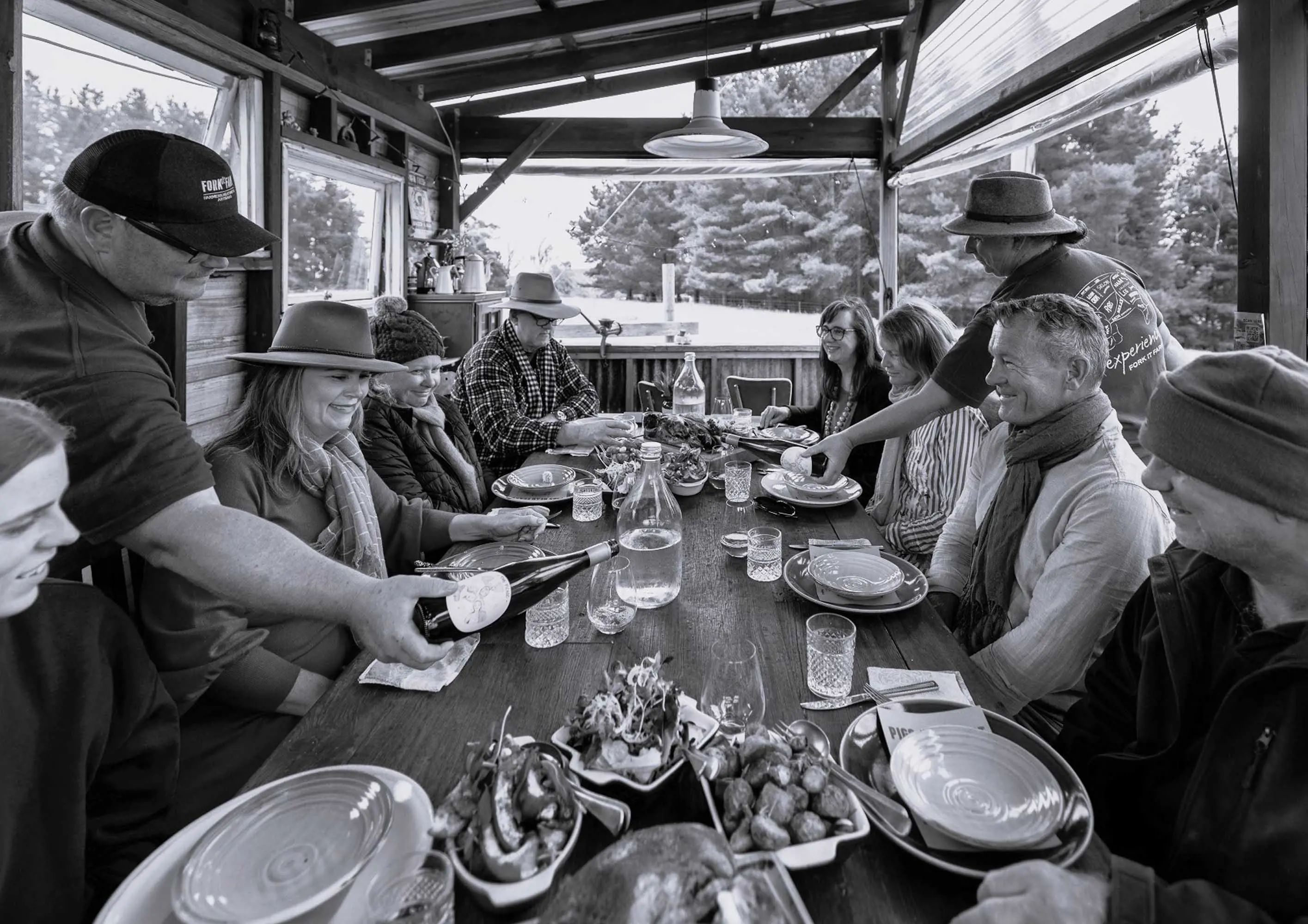
Get some pork on your fork
It doesn’t get much wintrier than a fiery feast, and in Tasmania, there’s always an Off Season twist on the classic.
Soaking up the sweeping serenity of Lebrina, the Pig’s Head Feast brings 12 guests together over four delectable courses paired with local wine, beer and cider. In Croker’s words, it’s a “genuine food experience that most people may not have ever tried before”.
The pig’s head is quite versatile and perfect for winter because it’s so nourishing and unctuous.
Begin with pig’s head soup and some Brady’s Lookout Cider – that’ll warm the cockles. Next, savour the crispy crunch of the pig’s ear (according to Croker, “they’re not just for dogs”). Graze on a platter of cured meats, from cheeky terrine to 12-month aged guanciale, smoked pig’s tongue and pork croquettes – and don’t forget the pickled veggies from the summer harvest. As much as you’ll want to hog every last morsel to yourself, you’ll be glad you left room for the next portion.
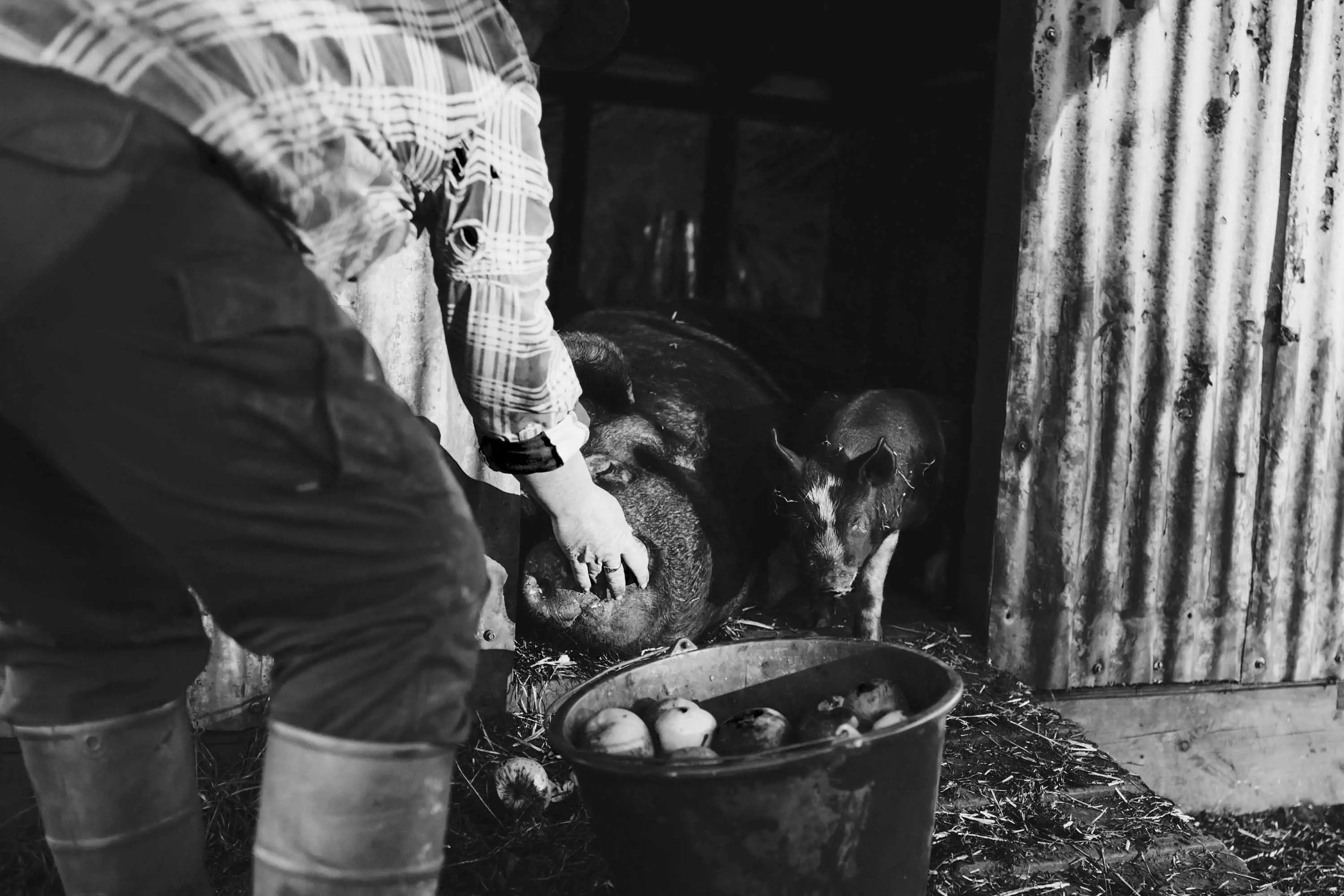
A meal to squeal about
The main course is when Croker really hams it up. Stick your knife and fork into a whole, shiny pig’s head and devour mouthfuls of warm, juicy roast pork with crunchy potatoes and seasonal winter pumpkin.
This eye-catching centrepiece sometimes sparks trepidation among feasters.
“Having a whole or half pig’s head in front of you, it’s like, ‘What do I do with it? Where to I start?’” Croker says. “Once people get the idea of digging in, these big strings of meat get pulled off the head.”
Even the dessert – apple crumble with candied jowl bacon – features some tasty swine’s noggin.
“People are really amazed at how delicious it is,” Croker says of the heady cuisine. “Some people have to be convinced to come along by their partner, but once they’re here, they love every minute.”
The intimate banquet between strangers, friends, families and couples is quite the bonding experience.
“It’s really lovely to watch those connections forming over the four hours,” she says. “By the end of the meal … you’ve learned new things about each other.”
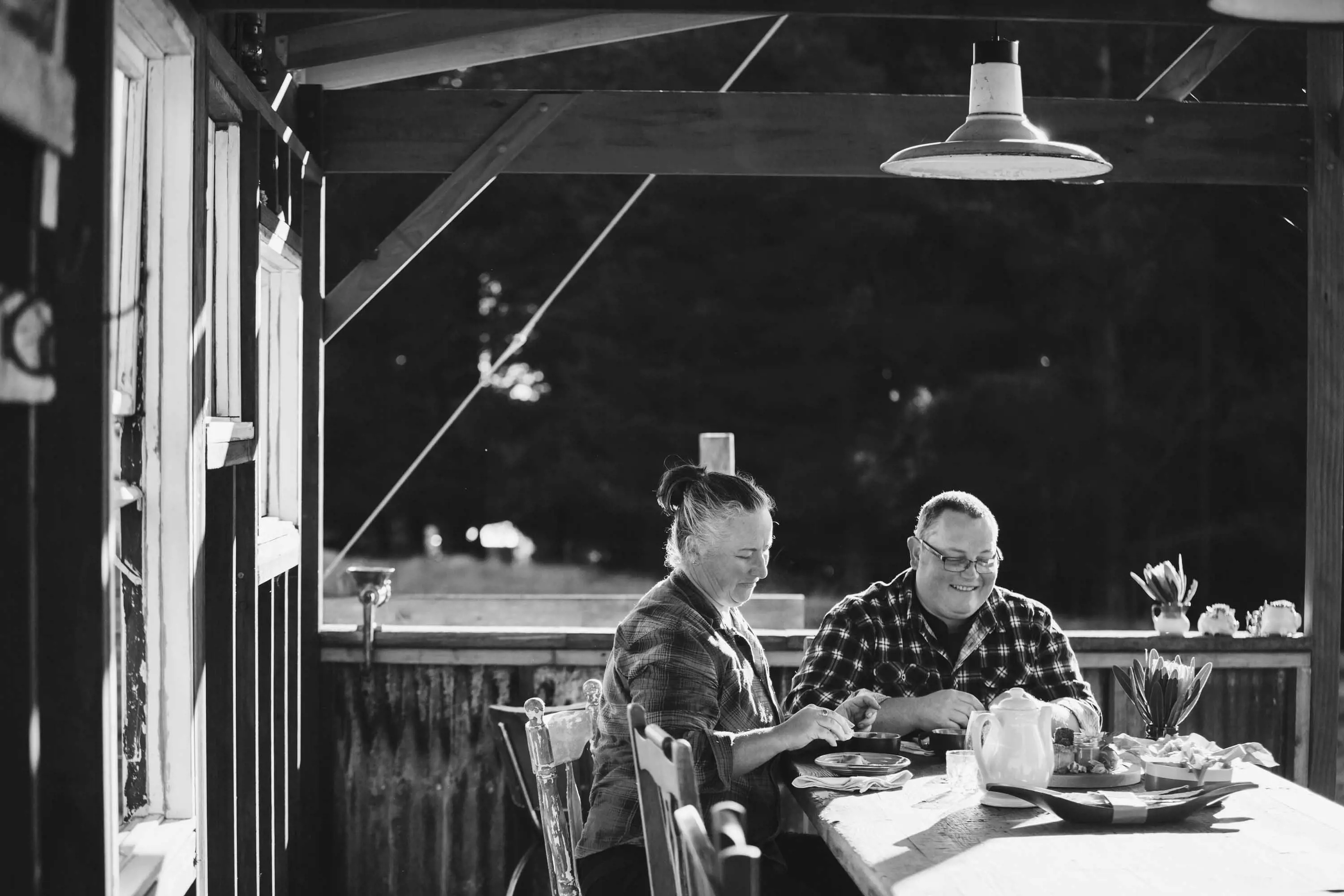
Off Season rituals
Croker reckons the Off Season provides the ultimate backdrop for the Pig’s Head Feast. What better time than winter for a hearty roast? The island’s cool seasonal shifts were a major motivator in the Crokers’ tree change from Queensland’s capital city to rural northern Tasmania.
“It’s … great for farming because we get high rainfall,” she says, “and it’s so enjoyable working in winter and not sweating.
“The skies are so blue and the grass is so green.”
During those rare moments away from the farm, the Crokers relish Tasmania’s wild Off Season in their own unique way. You might spot them at their favourite turquoise beach at majestic Bay of Fires in the larapuna area.
“We always go to Binalong Bay,” Croker says. “There’s no one else around and it’s usually beautiful to walk along the beach and just have the whole place to yourself.”
Not too far from here is another north-east gem on the pig farmers’ winter wish list: Tassie Scallop Fiesta is their go-to for new-season seafood in beachy Bridport. Failing that, you’ll find them taking a well-earned break beside a blazing hearth: cosy, warm and “mesmerised by the fire”.
The “fork it” philosophy seems to be working out rather nicely.
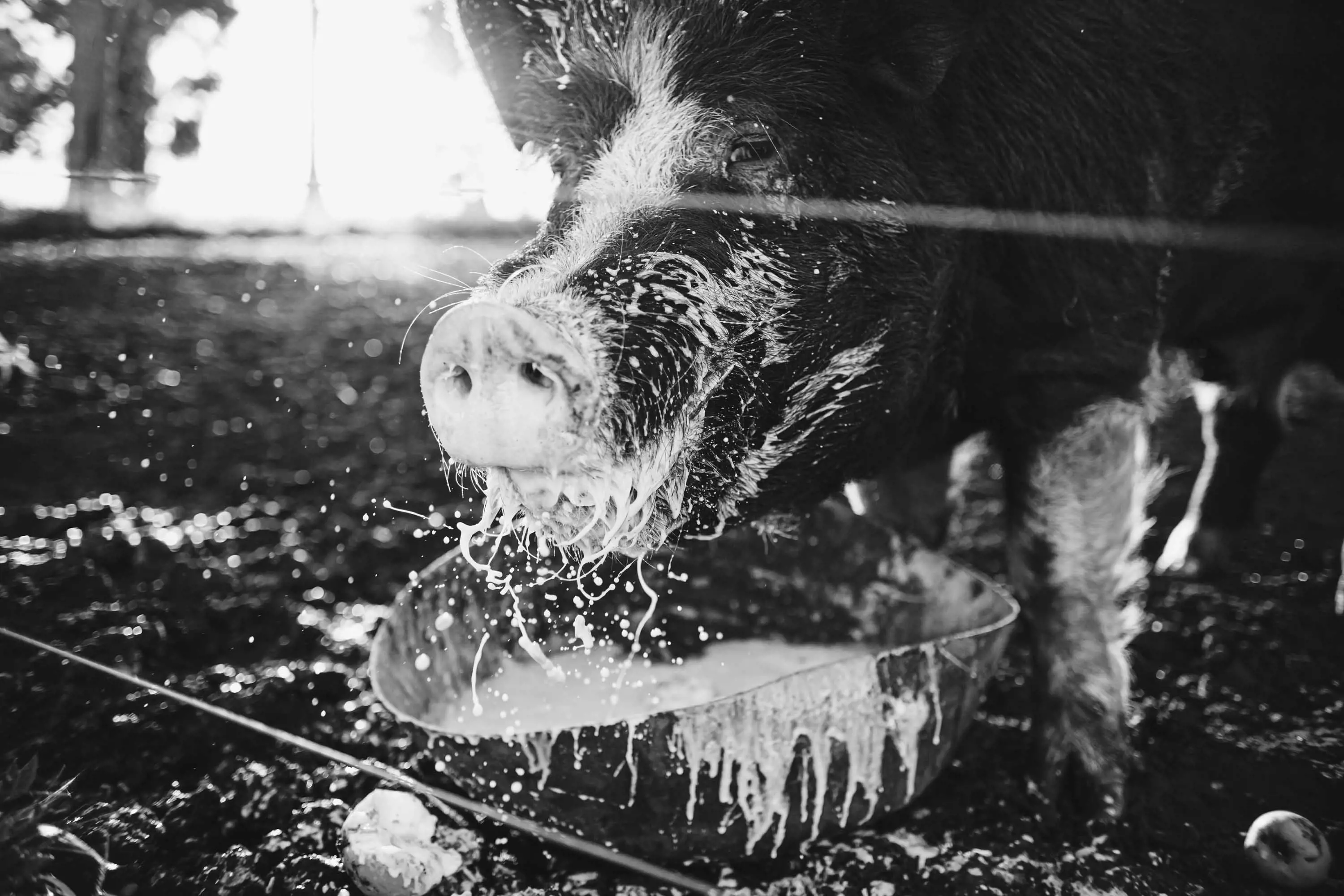
Tasmanian FAQs
What are the best Tasmanian farm experiences?
Slow farming practices and small-scale production are what make this island unique. Farming in Tasmania ranges from lavender to tulips, truffles to cherries, salmon to dairy … each specialty as premium as it gets. The pristine air, cool climate and clean water infuse Tasmanian produce with an unmatched freshness, producing rich flavours. Meet the makers, feed the animals, retreat with a farm stay and taste the goodies straight from the source. Be it farmers’ markets or kitchen classes, gather inspiration from this list of Tasmania’s best farm experiences.
What are the top Tasmanian foods?
Food in Tasmania ranges from naturally sweet to ocean-soaked salty; from earthy and aromatic to fresh and fruity. This wild island is renowned for its black truffles, wine festivals, rare leatherwood honey, fine cheese and a mouthwatering array of seafood (think abalone, rock lobster, salmon and scallops). If you’re seeking the Tasmanian gourmet experience, why not take a Northern Forage road trip? There are farm gates seemingly at every turn along this scenic tasting trail.
How cold is Tasmania in winter?
Tasmania winter temperatures are the among the lowest in Australia, meaning more opportunities for snow, cold plunging and cool-climate tastings. The Off Season is also prime time for mulled cider and wine, Southern Lights sightings, dark sky vistas, nocturnal wildlife encounters, fireside luxury and steamy sauna sessions. The state’s coldest temperatures occur in June, July and August – average temperatures in Tasmania vary, but in Launceston, you can expect an average minimum of 3°C and an average maximum of 13°C.
Stay in the know
A flurry of unmissable Off Season offers and events has blown in for the winter. Subscribe for curated Off Season updates and handy tips.

